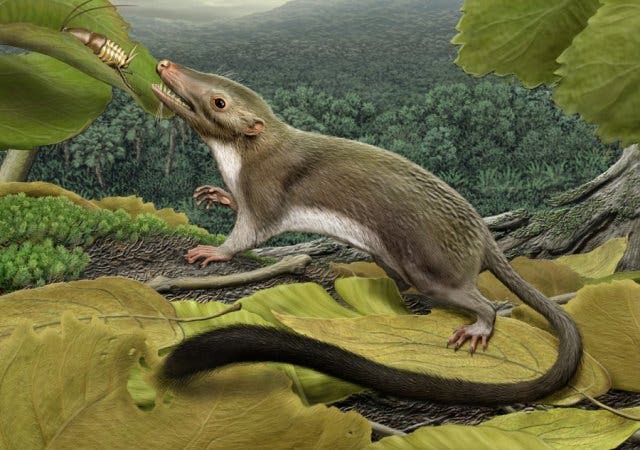New evidence backs up a 75-year-old evolutionary theory that said early mammals had to creep in the darkness to escape dinosaur predators which lurked at day.
Behavioral data on 2,415 mammal species, representing 91 percent of all mammal families, was plugged into a computer model that constructed multiple family trees (phylogenies). About 60 percent were nocturnal, like the vampire bat or the four-toed hedgehog, and 26 percent were diurnal, like squirrels or humans. The rest, like the star-nosed mole or muskrat, are characterized as cathemeral, meaning they exhibit irregular activity at day or night, and a few crepuscular (active only at twilight) and ultradian (active in cycles of only a couple of hours at a time) mammals were included in the analysis as well.
The so-called “nocturnal bottleneck” hypothesis was first coined in 1942 by paleontologist Gorden Lynn Wall, who reckoned mammals had to be nocturnal to survive in a dinosaur-dominated world. Ever since the theory was first proposed, scientists have been looking for proof.
There are quite a few clues that point towards a darker mammalian past. Most mammals, humans not included, lack a fovea — a small, central pit composed of closely packed cone cells in the eye, located at the center of the retina — which biologists say can perceive for the sharpest images. The shape of mammalian eyes also seems to favor low-light conditions.
Now, with such an extensive behavioral dataset in their palm, the authors say mammals were likely nocturnal throughout the Mesozoic, an era which lasted between 252 million to 66 million ago. Quite the long night.
Remarkably, the first mammals that were active during both day and night appeared only 200,000 years after the extinction event that wiped out the dinosaurs, as reported in the journal Nature Ecology & Evolution. The researchers at Tel Aviv University in Israel and University College London say these mammalian day-time pioneers were most likely the ancestors of today’s even-toed ungulates (cattle, llamas etc.) but also those of cetaceans like dolphins. In evolutionary time, that’s really fast, signaling that the numerous empty niches favored rapid adaptation of diurnal activity.
The first truly diurnal mammals seem to have appeared 52.4 million years ago, or 13 million years since the last dinosaur was alive. These were the ancestors of simian primates — such as gorillas, gibbons, and tamarins. The analysis bodes well with what our current understanding of the biology of various animal families. The visual acuity and color perception of simians, for instance, is comparable to those of diurnal reptiles and birds, which never left the daytime niche.
“We were very surprised to find such close correlation between the disappearance of dinosaurs and the beginning of daytime activity in mammals, but we found the same result unanimously using several alternative analyses,” explained lead author Roi Maor, Phd. student at Tel Aviv University and UCL.
The research is quite brilliant in the sense that it found a workaround for the scarcity of the fossil record and for the challenge of inferring behavioral traits from fossils. Working with data on the behavior and ancestry of living animals can tell us surprisingly many things about their ancestors’ past. At the same time, no one can say for sure that dinosaurs going extinct is what eventually let mammals out of the dark. For instance, maybe there were actually day-time mammals living alongside dinosaurs. There’s pretty strong evidence, however, that at least most mammals alive until 66 million years ago likely lurked under the cover of darkness.










